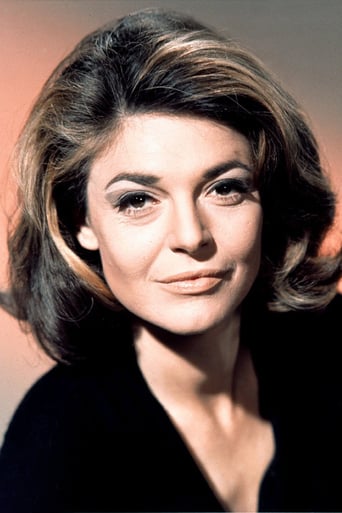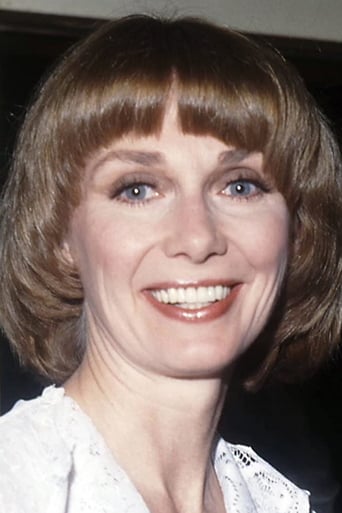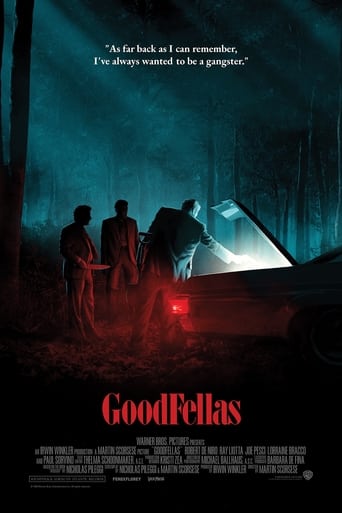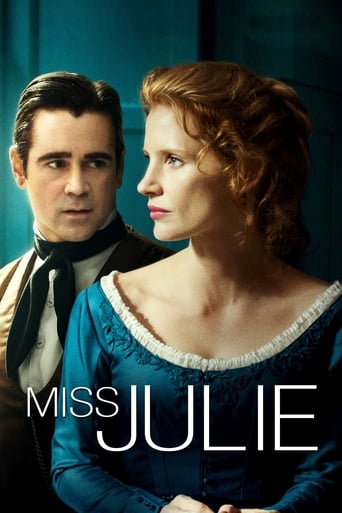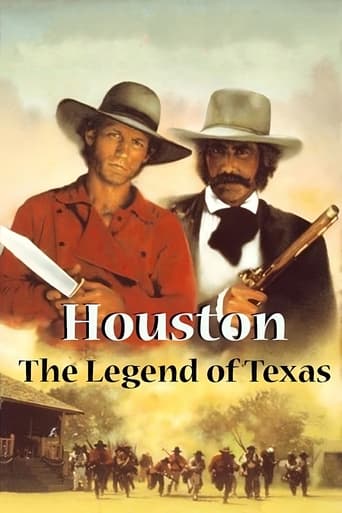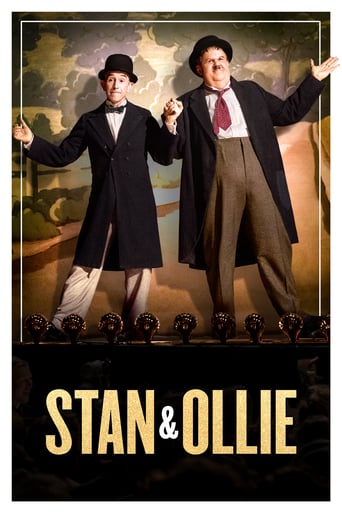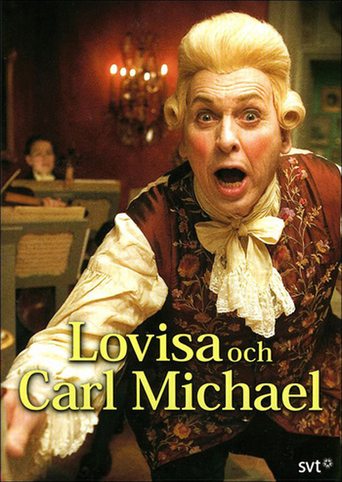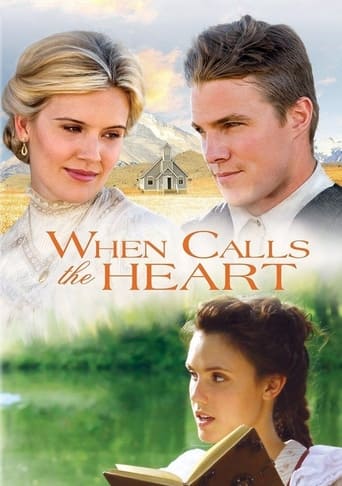The Miracle Worker (1962)
The true story of the frightening, lonely world of silence and darkness of 7-year-old Helen Keller who, since infancy, has never seen the sky, heard her mother's voice or expressed her innermost feelings. Then Annie Sullivan, a 20-year-old teacher from Boston, arrives. Having just recently regained her own sight, the no-nonsense Annie reaches out to Helen through the power of touch, the only tool they have in common, and leads her bold pupil on a miraculous journey from fear and isolation to happiness and light.
Watch Trailer
Free Trial Channels
Cast


Similar titles

Reviews
If the ambition is to provide two hours of instantly forgettable, popcorn-munching escapism, it succeeds.
It's an amazing and heartbreaking story.
It’s fine. It's literally the definition of a fine movie. You’ve seen it before, you know every beat and outcome before the characters even do. Only question is how much escapism you’re looking for.
It’s fine. It's literally the definition of a fine movie. You’ve seen it before, you know every beat and outcome before the characters even do. Only question is how much escapism you’re looking for.
Anne Sullivan, played brilliantly by Anne Bancroft was Helen Keller's teacher in real life and in film The Miracle Worker. Anne Sullivan was an American orphan born with trachoma which lead to her to be almost completely blind. She had a series of botched operations but in The Miracle Worker she could see, certainly more than Helen Keller, and her remembrances of her past trauma are depicted in a hazy visual dream-like state.Keller is played by Patty Duke, also a world class performance.Both won Oscars in 1962 for this movie.Sullivan was from immigrant, penniless Irish parents and was delegated to almshouse until age 14 when she was admitted to the Parsons School for the Blind. Her brother died in the almshouse while there perpetuating the trauma of her experience in that institution.Adept at finger spelling and armed with her own history of resilience, Sullivan takes on Helen Keller. Helen is little more than a human being who eats with her hands from everyone's plate, engages in temper tantrums that would make Jimmy Connors blush, and can only communicate in the most rudimentary form . Her family has all but given up on her when they enlist Anne Sullivan for employment as her a dogged teacher and governess for Helen.Sullivan had a gift for diagnosing and treating Keller's difficult communication problem. She transforms Helen Keller from something like a feral animal to a human being. In this sense she is a health leader not just a teacher and an intuitive caretaker.Ms. Sullivan achieved in two weeks something of a miracle. She was able to accomplish this due to her ability to empathize and look back on her own past to prevent Helen's future from being as dismal as hers might have been. "We used to play with the rats" when describing one of her childhood experiences to the the Kellers in the almshouse. The turn of the century was a terrible time to be institutionalized and conditions were characteristically inhumane.When Anne Sullivan arrived in Tuscumbia, Alabama, she was at odds with the Southern position on pre and post-slavery. The Kellers used to own slaves and this created immediate tension. Sullivan's political leanings were socialist and she was a suffragette, to boot.Sullivan's methodology was akin to family theory models which involve removing the child from the home, and in Keller's case, the overprotective arena. The family members display enmeshment perpetuating Helen's lack of social and intellectual progress. Additionally, current studies have shown that overprotective parents may be a factor in victimization and bullying of children(Georgiou, 2010). Certainly Keller would have a difficult time integrating in a new and strange environment such as an institution.ReferenceGeorgiou, S. N. (2008). Bullying and victimization at school: The role of mothers. British Journal of Educational Psychology. 78, (1), 109–125.
Many of the previous comments and reviews of "The Miracle Worker" have detailed the amazing story of Helen Keller (1890-1968)----a child born with normal vision and hearing who became blind and deaf at nineteen months of age due to a tragic illness. Annie Sullivan rescued this remarkable child from a life of virtual isolation. As a result, Helen became an honor graduate of Radcliffe College (1904), a world famous author-lecturer and a greatly admired inspirational role model for the disabled.This story is best known to us through the play and film---both starring Anne Bancroft as Annie and Patty Duke as Helen.The play won the Tony Award for the best play of the year in the 1959-1960 season (running for 719 performances), and Bancroft received the best actress Tony Award for her leading role. The play garnered two other Tony Awards-----including best director for Arthur Penn.The film was similarly honored with Oscars to Bancroft (best actress) and Duke (best supporting actress) for 1962. They reprised their earlier stage roles. It also received Oscar nominations for Penn (best director) and William Gibson (best adapted screenplay).But lest we forget----the very first presentation of the Helen Keller story in a visual medium came on Feb. 7, 1957. It was the 19th episode during the first season of Playhouse 90----one of the greatest gems of the Golden Age of Television. This is where the Gibson-Penn collaboration first began. It had a different cast then---Teresa Wright played Annie and Patty McCormack was Helen. McCormack was then 11 years of age when she played the considerably younger real Helen, whereas Duke was almost 13 when she first appeared in the play. The Playhouse 90 version was introduced by Mickey Rooney, who pointed out that this was an original story by Gibson that had never been seen before. Wright received an Emmy Award best actress nomination but lost out to Polly Bergen in the Playhouse 90 broadcast of "The Helen Morgan Story." I recently had the good fortune to be in New York City and visited the remarkable Paley Center for Media on West 52nd Street---one of the city's truly outstanding destinations. Among its many archival treasures is the Playhouse 90 "The Miracle Worker." I saw it again for the first time in over 50 years, and would like to offer a few comments about it.In my opinion, Wright's portrayal of Annie surpassed Bancroft's. Wright projected an impressive young woman who also had warmth and humor. She made Annie a believable person with real strengths and weaknesses. Bancroft's performance always seemed structured, edgy and essentially an actor's creation rather than a stab at reality---without Wright's humanity and empathy. I wonder whether Wright was ever offered the opportunity to reprise her role in the play when it was cast. McCormack presented a Helen that occasionally exhibited a mischievous streak in addition to frustration and anger. I don't recall that aspect as clearly in Duke's performance. Also, McCormack was somewhat closer in age to the real Helen when the events of the depicted story actually occurred. Both gave us stunning performances for child actors.The week following Playhouse 90's "The Miracle Worker," Mickey Rooney starred in its production of Rod Serling's "The Comedian." It won the Emmy Award for 1957's Best Single Program of the Year. "The Miracle Worker" had not even been nominated for this award. Today, nobody remembers "The Comedian." But most everyone knows and admires "The Miracle Worker" in all its versions.When you have the opportunity, check out the Playhouse 90 broadcast at the Paley Center for Media. You will find it to be an experience that is well worth your time. It will provide you with interesting and compelling performances of Annie and Helen that differ in many ways from those most of us are familiar with from the much better known play and film.
Incredibly, though the film opened in 1962, my grade school teachers somehow must have known someone who knew someone and managed to show our assembly the film just two years later, and I recall being so impressed that someone could help someone with a handicap, that to this day my life is still directly influenced by being a part of the deaf and handicap community.Of course the highlight of the film is the 12-minute dining room struggle between a wild Helen and Annie - filmed 20 years before anaerobic exercise became popular, and you can bet that not all the sounds heard are those of a Foley artist - no doubt both actors had their share of bruises after that scene! An incredible true story and a film worth it's Academy Awards, and probably one of the last great Hollywood films to be made in Black and White.Glades2
Adaptation of the play (based on a real story) of Anne Sullivan (Anne Bancroft) trying to teach a young deaf and blind girl named Helen Keller (Patty Duke) how to communicate. Bancroft and Duke played the roles on stage and were (thankfully) allowed to recreate them in the film.This film is a little too pat to me (especially in the rushed happy ending) and it belies it's stage origins every once in a while but it was still worth watching. It pulls no punches in showing how Keller had to be sometimes brutally taught to obey. The fight for authority in the dining room was harrowing to watch. I can't imagine how the actresses did that night after night on stage! The directing is serviceable and the supporting cast is good but this should be seen just for Duke and Bancroft. They both won well-deserved Academy Awards for their performances. When they're on screen you just can't take your eyes off them. So--not a masterpiece but a very good film of a true life story. I give it an 8.






